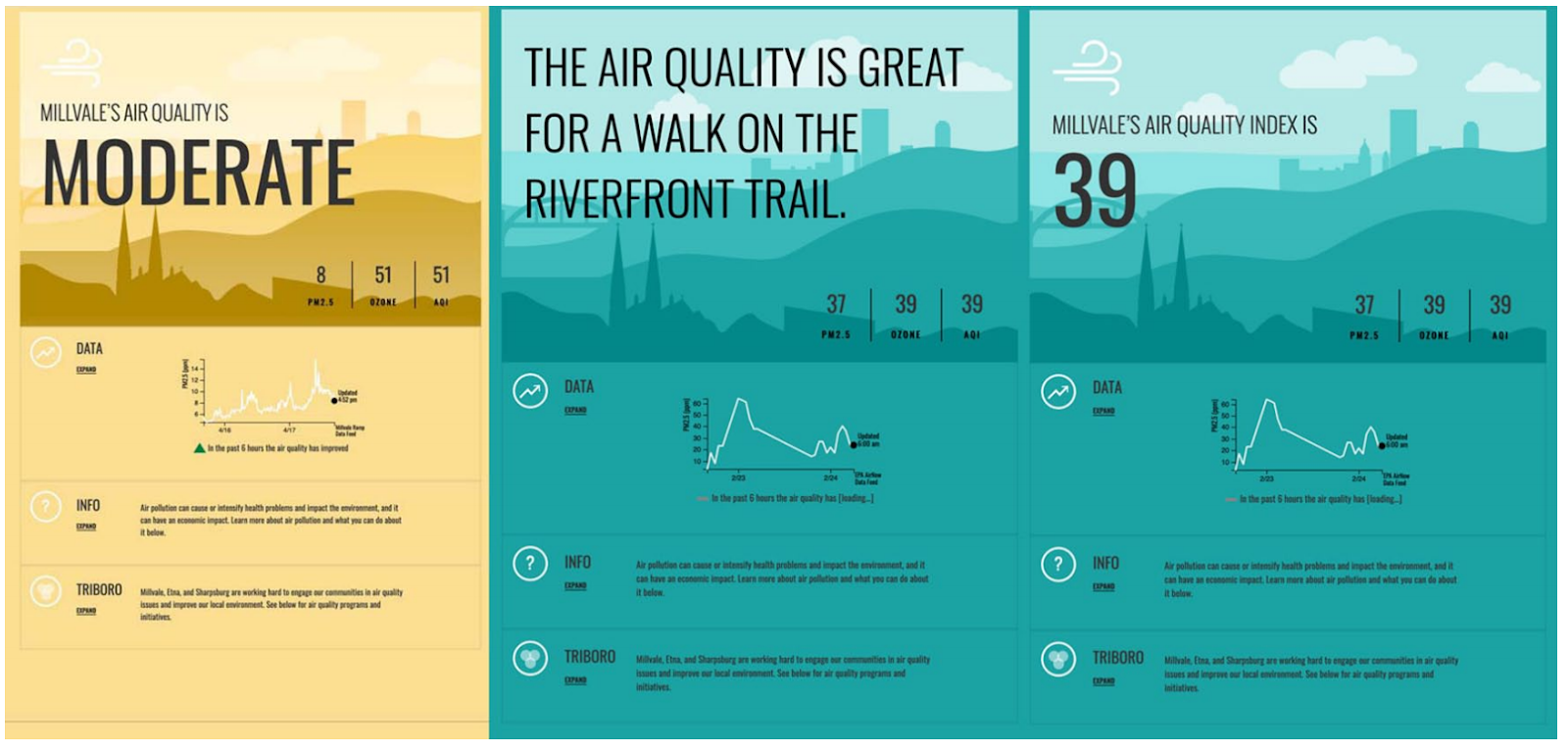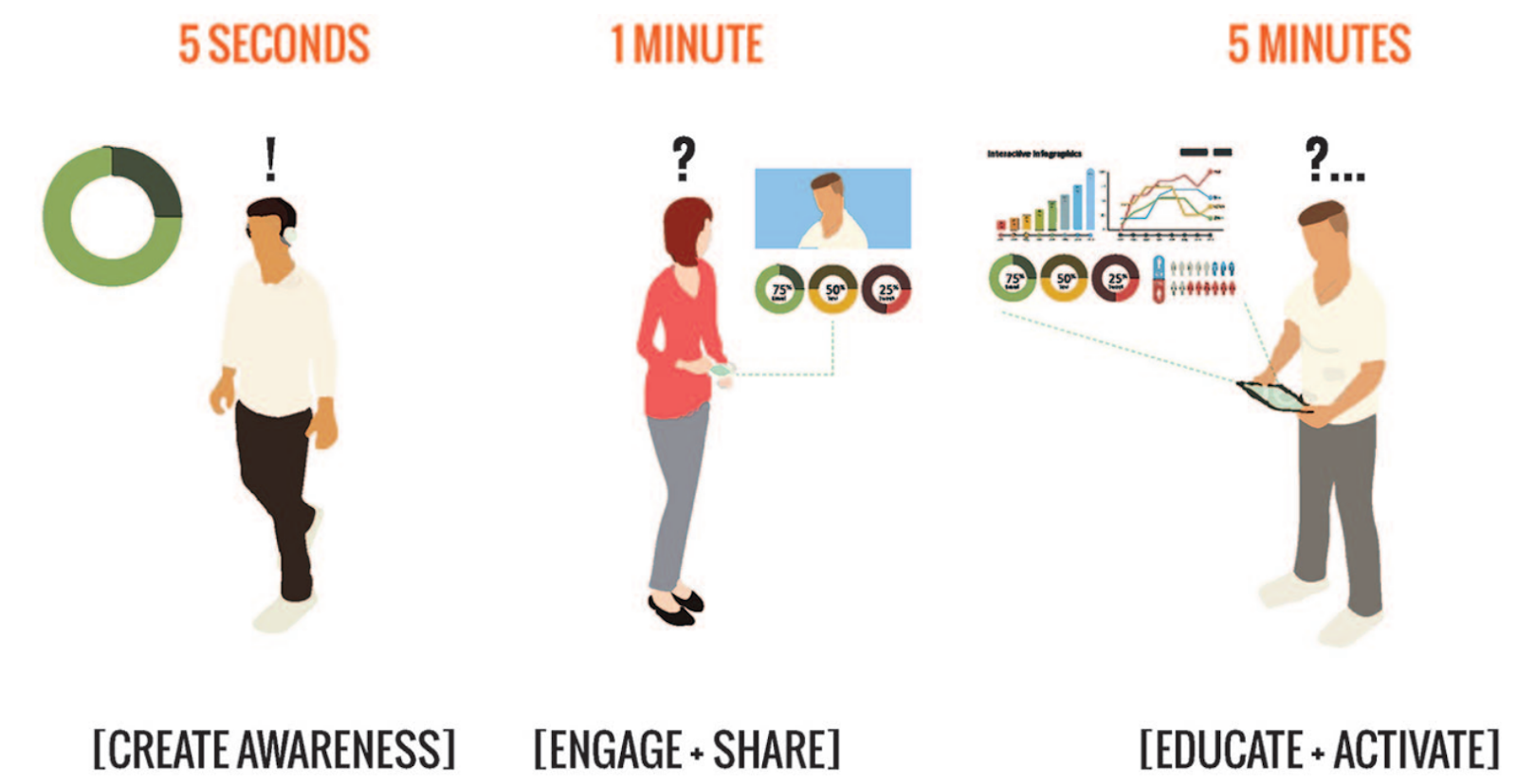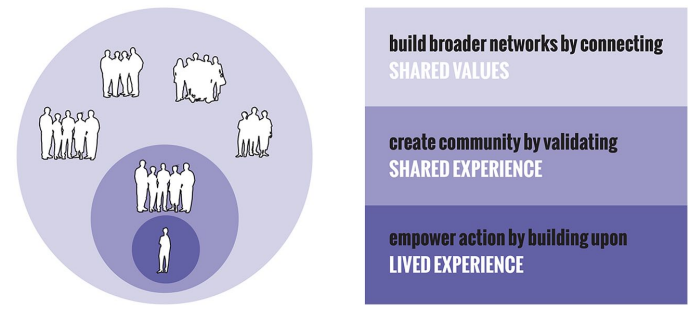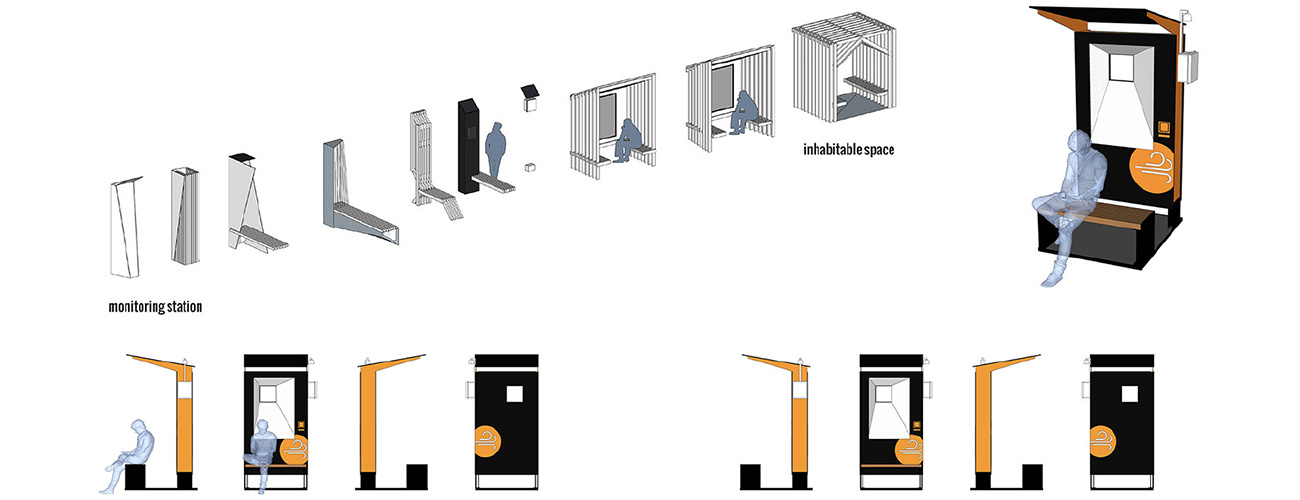Acting on the Invisible
What do air quality, art, and activism have in common?
Find out in Christine Mondor and Nico Azel’s recent IJAC article “Acting on the Invisible: Computational Tools and Community Action in the Landscapes of Air Quality”
Published in the current special issue “Impact and Collective Empathy” of the peer reviewed International Journal of Architectural Computing , Christine and Nico’s article explains how designers and artists can help solve wicked problems like air quality by strategically using technology and computation.
Poor air quality can be difficult to perceive and thus difficult to solve. By raising public awareness with installations that use data and technology, designers and artists can help to make the invisible visible.
Going back to 2012, evolveEA has been working with the community of Millvale around issues of sustainability and engaging air quality as an important component to community health and wellbeing. Over time, Millvale’s air quality work has been aggregated under the Breathe Easy project and a number of projects have been completed to help raise the public’s ability to perceive air quality and inspire action.
Some of these Breathe Easy projects include: the MillvaleAir Dashboard, Community Air toolkits, Custom Community Air Monitoring Stations, an Air Filter Lending Library at the Millvale Community Library, and collaborations with the other Triboro communities.


Each of these projects is situated within the Breathe Easy theory of change and helps to grow collective beliefs, create a community of concern, and build a sense of resiliency and identity that contributes to the long-term transformation of community values.

Using the Breathe Easy’s many projects as a reference, the article expose’s the ways in which no single computational application can address complex socio-ecological issues like air quality. Instead proposing that designers and community groups should work with a broad ecosystem of technology and computational tools, and that the use of those tools should be grounded within a theory of change.
If you would like to learn more about Breathe Easy or the many ways our region is working to tackle air quality issues through a wide range of projects and programs, check out some of the links below:


